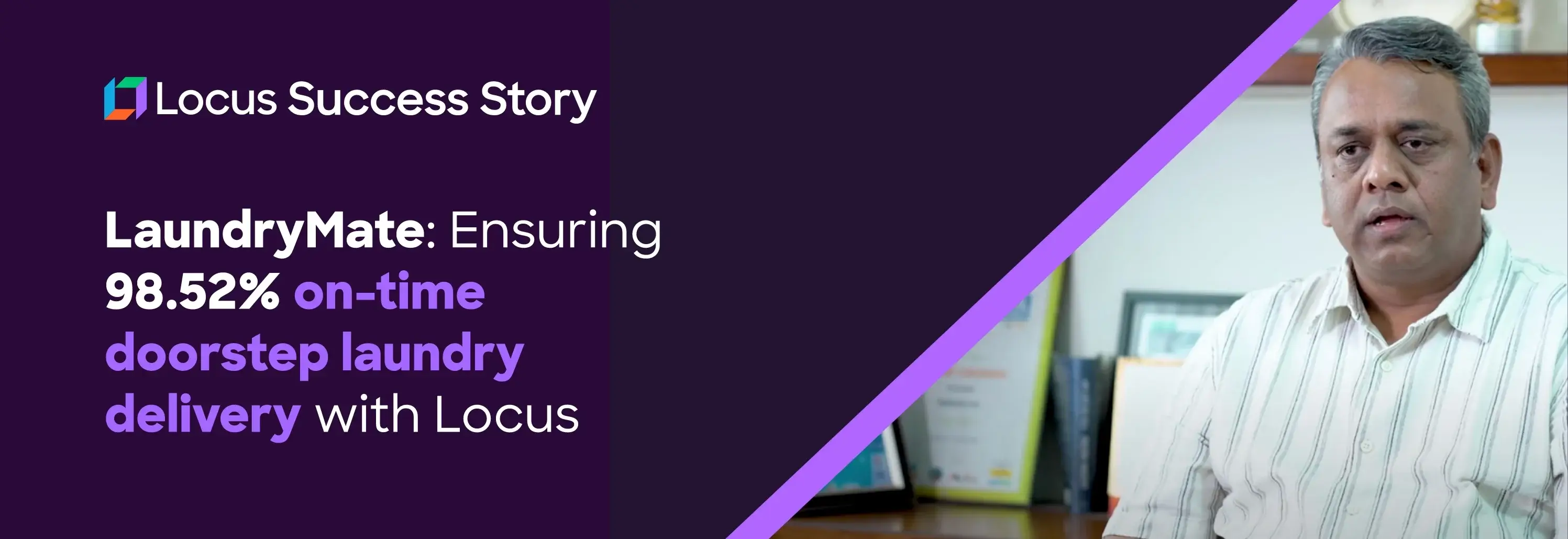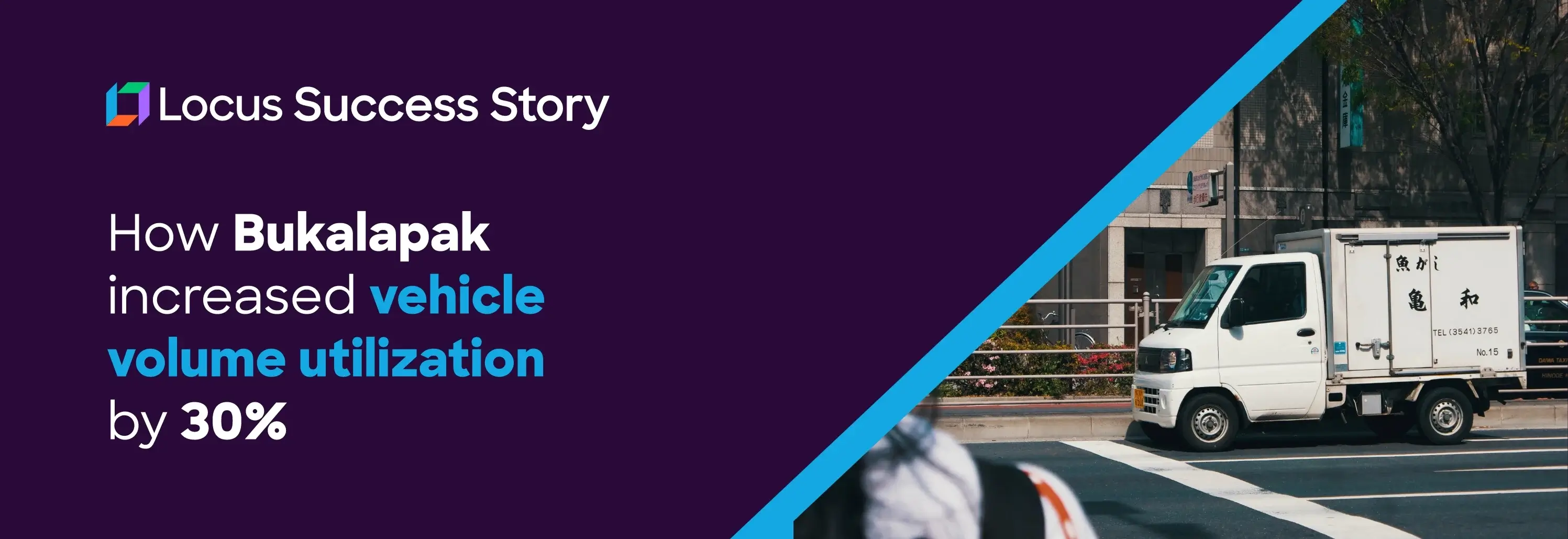The complete guide to reducing cart abandonment

Imagine that you own a retail outlet. Your customer purchases items and fills it in their shopping cart. But when they are about to bill those items, the customers exit the shop without making a purchase.
Technically in e-commerce, logistics, and retail scenarios, we call this situation cart abandonment. It is arguably the single most biggest challenge to attaining revenue in any retail operation, and as we will see, fulfillment plays a big role in managing it.
Let’s dive in.
The essential list of logistics acronyms and abbreviations for retailers

What is cart abandonment?
Cart abandonment occurs when customers add items to their online shopping carts but leave the site without completing the purchase. This issue is a significant concern for e-commerce businesses, as it directly impacts sales and revenue. During the peak season, when consumer demand surges, cart abandonment rates often increase due to several factors. High traffic can lead to slower website performance, causing frustration among shoppers. Additionally, the influx of promotional emails and ads can distract customers, leading them to abandon their carts. Therefore, effective strategies are essential to convert these potential buyers into actual customers and mitigate the impact of cart abandonment, especially during this critical period.
How to calculate the cart abandonment rate?
The cart abandonment rate represents the percentage of customers who add items to their online shopping carts but leave the website before completing their purchase. This metric highlights the rate at which potential buyers exit without making a purchase compared to the total number of carts created.
To calculate the cart abandonment rate, use the following formula:

Let’s illustrate it with numbers.
Suppose 600 shopping carts are created, and 200 are successfully converted into completed purchases.
Cart Abandonment Rate = [1 - ( 200 / 600 )] * 100
Cart Abandonment Rate = (1 - 0.33) * 100
Cart Abandonment Rate = 0.67 * 100 = 67%
In this case, the cart abandonment rate is 67%
The definitive guide of E‑commerce logistics

Why do customers abandon carts?
Global cart abandonment rates have been steadily climbing since 2014, reaching an all-time high of 70% in 2023, the highest since 2013.

There are many reasons why customers abandon their carts, and addressing these issues can help reduce friction at checkout. Let's explore these reasons one by one.
1. Unexpected delivery costs
Hidden delivery or shipment costs are the primary reason customers abandon their carts. Customers might like a product, but unexpected delivery charges can discourage them from completing the purchase. These additional charges, which can include taxes or handling costs, are often revealed at the final stage of checkout, causing customers to opt out. Businesses might think that displaying these costs late will secure initial commitment, but this strategy often backfires. To avoid this issue, transparency and clear communication are essential.
This is why it is necessary to ensure that all fees are visible from the start, or providing an estimator tool for shipping costs early on can help clear any unwanted surprises.
7 ways retailers can reduce delivery costs

2. Limited payment options
of worldwide online consumers abandoned cart due to problems in payment options.
The methods of making payments have multiplied in recent decades and each user has wildly different preferences to making payments. When customers do not find their options, they are more likely to abandon their carts and shop somewhere they know they can pay in their preferred way. Often that's because pricing has become so competitive that consumers are aware they can often find the same item for the same, or even lower price.
To prevent this, businesses need to offer a wide range of payment options, including bank transfers, debit and credit cards, digital wallets, and Buy Now Pay Later (BNPL) where appropriate.
3. Ambiguous return policies
of worldwide online consumers abandoned carts due to the problems related to returns.
Clear return policies are crucial for earning customer trust. Sometimes, in an attempt to reduce the number of returns, businesses bury their return policies in obscure pages, make the text too small to read, or complicate the terms, making it difficult for customers to understand. But this approach often backfires because when return policies are ambiguous and hard to interpret, customers are more likely to abandon their carts. To minimize cart abandonment, businesses should provide a straightforward, simple, and clear returns policy, including expected deadlines and accessible customer support. One middle ground is empowering the customer to carry out the return themselves by handing in their item to a nearby store.
A comprehensive guide to effective returns management

4. Website performance issues
When customers encounter slow loading pages, technical glitches, or crashes, they often abandon their carts. These performance issues can stem from inadequate website infrastructure, lack of site optimization, excessive pop-ups, long load times, missing content or photos, complicated checkout processes, or high traffic volumes. To address these issues, e‑commerce and retail businesses should regularly monitor site speed, invest in robust hosting solutions, optimize their sites, and implement content delivery networks. Ensuring a smooth and efficient online experience is essential to reduce cart abandonment.
5. Out of stock items
When products appear available at the time of adding to the cart but are out of stock during checkout, customers tend to abandon their carts. This issue primarily arises from poor inventory management and delays in updating the website with current stock levels. To avoid this, businesses should invest in an order management system that reflects real-time stock levels and informs customers promptly about product availability, ideally before they reach the checkout stage.
What is economic order quantity and what are its challenges?

6. Unpredictability in deliveries
Unpredictable delivery times are a major factor leading to cart abandonment, as customers need to trust the delivery process to complete their purchase. The anxiety and uncertainty about when their order will arrive often result in a higher number of WISMO (Where Is My Order) calls. To mitigate this, accurate tracking information, reliable delivery estimates, and proactive communication are essential. Here are the factors that make deliveries predictable and strengthen this customer trust:
- Customer reviews and testimonials
- Transparent return policies
- Multiple contact methods for communication
- Clear expected delivery times
- Delivery and return time slots
- Rescheduling delivery options
Some businesses might believe that product quality alone is sufficient, but a lack of customer-friendly delivery logistics and predictable delivery and return options can significantly increase cart abandonment rates. Providing a reliable and transparent fulfillment process is essential for reducing cart abandonment.
3 ways to reduce cart abandonment rate
When addressing cart abandonment, businesses often focus on website interface, payment options, and the overall ease of shopping. While these factors are crucial, there's another significant aspect that is frequently overlooked—logistics. Without optimizing logistics, reducing cart abandonment rates can become a daunting task. Here are three logistical strategies that e-commerce and retail businesses can implement to effectively cut down on cart abandonment rates:
1. Competitive shipping options
of online consumers worldwide abandoned carts due to issues arising from inadequate options around preferred delivery methods, delivery provider, as well as unexpected delays in delivery.
In today's market, customers expect a variety of shipping options that cater to their individual needs. Beyond same-day and next-day delivery, they seek control over their delivery experience. This control includes selecting specific time slots for deliveries, arranging second attempts for missed deliveries, scheduling replacement deliveries, and managing returns. Allowing customers to choose their delivery time slots significantly reduces the likelihood of missed or failed deliveries.
Moreover, flexibility in fulfillment is crucial. Some customers prefer their orders to be delivered to the reception room of their office due to busy schedules. Others might want to surprise loved ones with gifts and prefer the delivery agent to leave the package at their doorstep and ring the bell before heading off for their next delivery. Other customers might prefer contactless delivery.
Enabling customer satisfaction through smart logistics in E‑grocery

As there is greater awareness around the environmental impact of consumer choices, more or them are comfortable in opting in for more sustainable deliveries. These batch together multiple orders in the same region so as to reduce the number of trips to properly service it, and in effect, reduce the overall volume of emissions.
2. Make way for an efficient return experience
An often overlooked factor in cart abandonment is the return experience. This experience begins with the product's return policy. When the return process is time-consuming and complicated, it discourages customers from completing their purchases. A return policy should clearly outline the return deadline, offer flexibility in scheduling return pickups, and detail refund processing and replacement options.
Allowing customers to choose their time slots for return pickups can significantly reduce cart abandonment rates. For instance, if a customer requests a return pickup and the message states that the delivery agent will come between 7:00 am and 10:00 pm, it can be inconvenient if the customer is not available during that time. If the customer is at work and no one is home to return the item, it results in wasted time and increased costs. Allowing the customer to select a specific return time slot, such as 7:00 pm to 9:00 pm, can solve this issue. Instead of brands providing a broad time estimate, offering precise time slots reduces the need for repeated return pickups and saves significant costs in return management.
3. Focus on predictable deliveries
Predictable deliveries are crucial for customer satisfaction and reducing cart abandonment. These stem from six critical components:
Failing to address any of these components can lead to significant costs. A poor delivery experience increases customer churn, as negative experiences linger in customers' minds, leading them to abandon carts in future orders. Brands aiming to reduce cart abandonment must consistently ensure delivery predictability. When customers trust that their orders will arrive on time, at their preferred time, and in perfect condition, they are less likely to abandon their carts.
Locus’ Dispatch Management Platform: Your solution to reduce cart abandonment rates
Cart abandonment rates represent lost revenue opportunities for businesses, often due to customers leaving before completing their purchase. While optimizing website design is an effective strategy, enhancing fulfillment processes and logistics operations is a powerful, yet often overlooked approach to reducing cart abandonment. To optimize the logistics process, businesses need a robust platform that significantly cuts down cart abandonment rates. One leading solution in this space is Locus.
Locus' Dispatch Management Platform offers advanced logistical capabilities designed to reduce cart abandonment rates effectively. Here’s how:
1. Accurate and reliable delivery estimates
Locus' platform uses advanced algorithms to provide precise delivery time estimates. When customers are confident about when they will receive their orders, they are more likely to complete their purchases. The platform’s real-time tracking and updates ensure these estimates remain accurate, building trust and reducing uncertainty.
2. Seamless returns and exchanges
A hassle-free returns process is crucial for customer satisfaction. Locus' platform simplifies returns by offering easy-to-follow return policies and efficient reverse logistics. Customers who are assured of a straightforward return process are more likely to complete their purchases, knowing they can easily return or exchange items if needed.
5 ways to ace last-mile reverse logistics

3. Enhanced customer communication
Locus’ platform facilitates proactive communication with customers, keeping them informed at every stage of their order journey. Automated notifications about order confirmations, dispatch statuses, and delivery updates enhance the customer experience, reducing anxiety and the likelihood of cart abandonment.
4. Seamless integration with existing tech stacks
Retail businesses often face significant challenges when integrating a new logistics platform with their existing tech stack, such as Order Management Systems (OMS), Warehouse Management Systems (WMS), or Transportation Management Systems (TMS). These issues include data compatibility, system downtime, and the need for extensive staff training. Additionally, ensuring real-time data synchronization across all platforms can be complex and time-consuming. To overcome these challenges, businesses typically employ phased integration approaches, work closely with tech vendors for customized solutions, and invest in comprehensive training programs for their employees.
Locus is designed to seamlessly integrate with existing systems like TMS, OMS, and WMS, ensuring minimal disruption and maximum efficiency. With its Dispatch Management Platform, businesses can achieve smooth integration in just a few weeks, leveraging real-time analytics and automated processes to enhance overall operations. This quick and efficient integration reduces cart abandonment by improving delivery speed and predictability, leading to higher customer satisfaction. By using Locus' platform, retailers can streamline their logistics, reduce costs, and provide a superior customer experience, all while maintaining compatibility with their existing tech stack.












